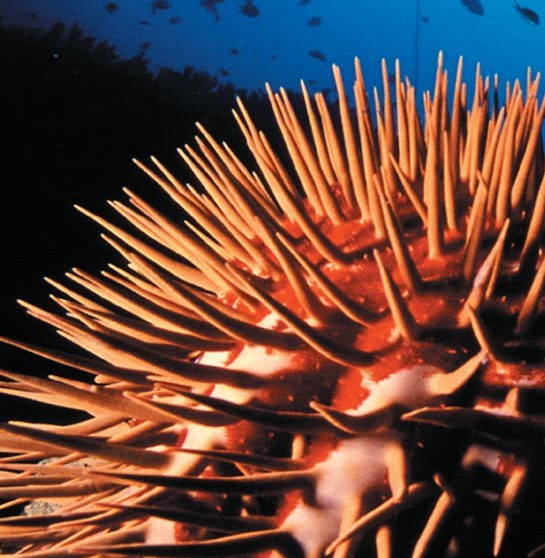Young starfish slapped
 New research shows coral can fight back against crown of thorns starfish.
New research shows coral can fight back against crown of thorns starfish.
The Great Barrier Reef faces numerous challenges, including plagues of crown of thorns starfish that decimate protected areas.
A new study from the University of Sydney shows that cral are not completely defenceless.
The experts found that they can attack the juvenile crown of thorns starfish and fight back to inflict lethal damage.
This occurs during a period of the crown of thorns starfish life cycle, where small juveniles shift from a vegetarian diet of algae to coral prey. But this change in diet makes the juveniles more vulnerable to attack by coral.
Their footage suggests that the crown of thorns’ feet (small tube-like projections on the underside of a starfish’s arm used for movement) reach out to touch the coral, the entire arm curls back to avoid the corals’ defensive stinging cells.
To protect themselves, coral polyps have stinging cells in their sweeper tentacles and outer tissue called nematocysts, that are also used to capture food.
This encounter damages the arms of juvenile crown of thorn starfish, delaying their growth into adulthood. Researchers also saw a 10 percent fatality rate among the juvenile crown of thorns starfish they studied. However, most juveniles that survived arm damage were able to regenerate partially lost arms.
The results give a fascinating insight into coral behaviour but the behaviour is not enough to protect it from other threats such as human-caused climate change, overfishing and water pollution.
The period when young crown of thorns starfish shift from a vegetarian diet to eating coral, which is an animal, is a critical one.
This is because young crown of thorns starfish who survive have the potential to contribute to population outbreaks that could devastate tropical reefs and coral.
Juvenile starfish can survive on algae for more than six years when they were previously thought to change diets at four months old, lying in wait until there is an abundance of coral.








 Print
Print